Tabby Cat Patterns/Mackerel Tabby Cat Pattern
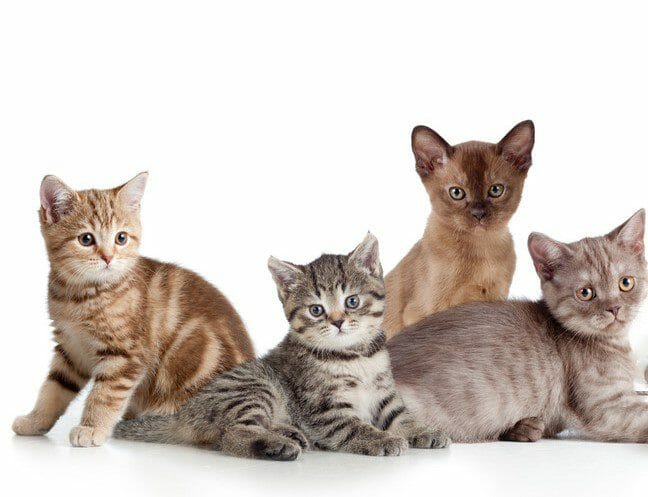
Tabby Cat Coat Patterns
Although there are four main types of tabby cat coat patterns, each type has stripes on its forehead and markings on its cheeks, back, legs, and tail. Different characteristics of these markings see them presented as dots, lines, bands, swirls, and flecks. One of the most common patterns is the Mackerel Tabby Cat Pattern, which resembles a tiger.
A tabby is not a specific breed of cat. Rather, it is a type of coat that is seen in many types of domestic cats. These patterns are naturally occurring and not only connect the feline to its direct relations, but also to the African wildcat (Felis lybica), the Asiatic wildcat (Felis libyca ornata), and the European wildcat (Felis silvestris)—all of which have similar tabby colors and patterns.
Tabby Cat Colors and Patterns
The four types of patterns found in tabby cats are:
- Classic tabby cat pattern
- Mackerel tabby cat pattern
- Ticked tabby cat pattern
- Spotted tabby cat pattern
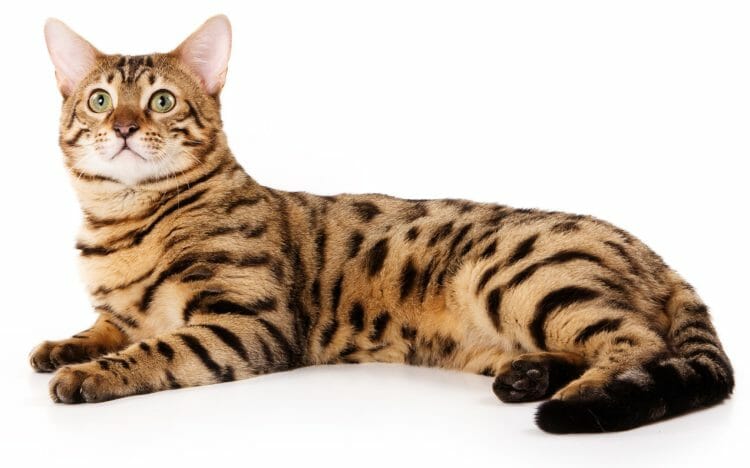
The Genetics of Tabby Cat Coat Patterns
The colors and patterns of a tabby cat are determined by two types of hair: agouti and non-agouti. When a single hair has more than one color, it is considered to be agouti. This phenomenon is caused by the inhibition of pigment while the hair grows.
Whether or not a cat has these markings is determined by the agouti gene. When the dominant agouti allele is present, the cat will be a tabby. Solid coat colors are brought about by the cat having two copies of a recessive gene.
At one point in history, all domestic cats would have been tabby cats. However, genetic mutations over time have brought about pointed, bi-color, and solid coats. In some cases, young kittens with a solid coat will have faint tabby patterns until the full pigmentation of their fur occurs.
Interesting Facts About Tabby Cats
- Throughout the 16th and 17th centuries, “tabby” was a phrase that was used to describe a female cat that was owned by a witch. Witch’s cats were called “familiars: and were believed to have the soul of a demon or human. Although popular beliefs claim that black cats were always favored by witches, the truth is that witches preferred the tabby. Because of this, many people believed that tabby cats had special powers and nine lives.
- One story about the birth of Jesus tells of the manger being unbearably cold. Mary pulled all the animals closer to shelter Jesus. However, they were all too large to get close to him. Eventually, a tabby lay with him and kept him warm. The legend tells that Mary drew an “M” on the cat’s forehead to thank it.
- The name “tabby” comes from fine silk originating in the Attabiy district of Baghdad. Historically, the tabby cat was compared to this silk because of their luxurious coats. The name Attabiy was translated into French in the 14th century as “Atabis.” This was later shortened to “tabis” and then translated into English as “tabby.”
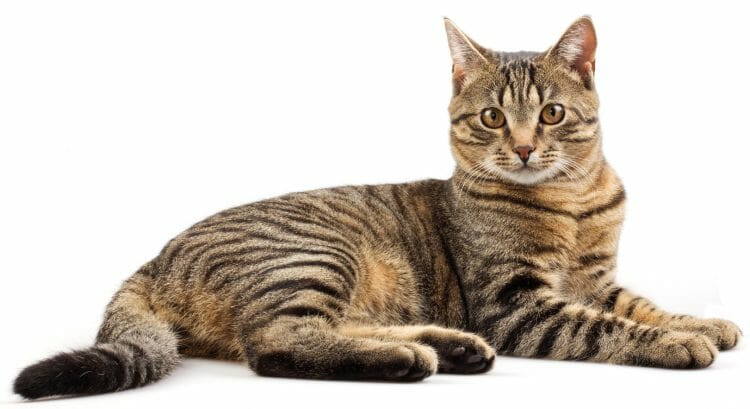
What Does the Mackerel Tabby Cat Pattern Look Like?
The mackerel tabby cat pattern is the oldest type of coat marking found in domestic felines and has existed for at least 10,000 years. The pattern was originally found in wild cats.
The mackerel tabby has distinctive narrow stripes running parallel down the sides of its body. Many people refer to felines with these markings as “tiger cats.”
One of the most distinctive features of the mackerel tabby is the M-shaped mark on its head. The ancient Egyptians saw these markings as sacred and named the cats “Mau” Religions such as Islam and Christianity have also previously regarded them as blessings.
Mackerel tabby cat stripes can be found in a variety of colors. However, they should always be even and not broken. Each stripe should break from one large stripe that runs the length of the cat’s spine. This resembles the skeleton of a fish, which resulted in the name “mackerel.”
The most common mackerel tabby nose color is pink with a black pigmentation around the outside. Most breeds have mackerel tabby patterns, including both long and short-haired varieties.
Mackerel Tabby Colors
Mackerel tabbies can come in all shades, including:
- Black on brown
- Black on silver
- Red
- Orange
- Lilac
- Fawn
- Cream
- Apricot
- Blue
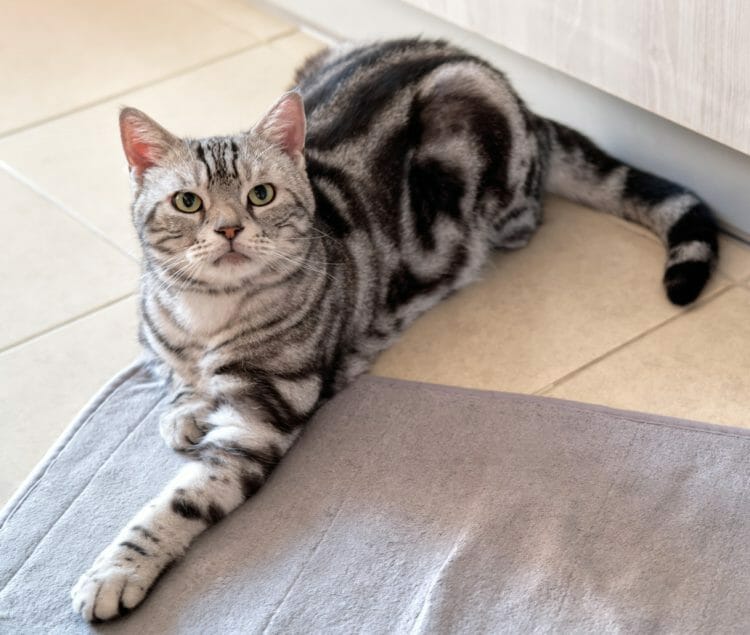
What Does the Classic Tabby Cat Pattern Look Like?
Sometimes called the marbled or blotched pattern tabby cat, these felines also have an “M” on their head and thick swirled markings on both sides of the body. These swirls may sometimes resemble a target.
Colors will contrast heavily. A black tabby will have darker ochres, olives, or browns that stand out, while an orange cat will have redder tones in its markings in comparison to mackerels. Shoulders will have butterfly patterns and three thin lines that run the length of the spine. The tails, cheeks, and legs will all feature heavy bars or bands.
The classic tabby gene is recessive, and most of these cats are found in the Middle East and the United Kingdom. Breeds that may have the classic tabby pattern include the American Bobtail and the American Shorthair.
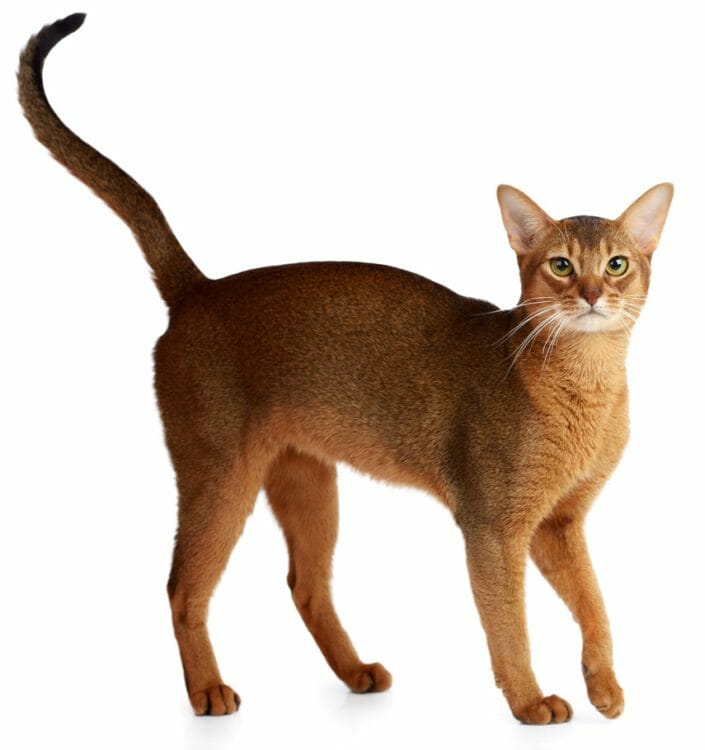
What Does the Ticked Tabby Cat Pattern Look Like?
An even spread of agouti hairs in different bands of color creates the look of the ticked tabby. These hairs give a sand-like, salt-and-pepper appearance. There will be some faint stripes visible on the belly, face, and legs.
Tabbies with the ticked pattern may also have the distinctive forehead “M” and bold line that runs the length of the spine, particularly when they carry the classic or mackerel allele. Some breeds that can have ticked tabby patterns include the Abyssinian and Singapura.
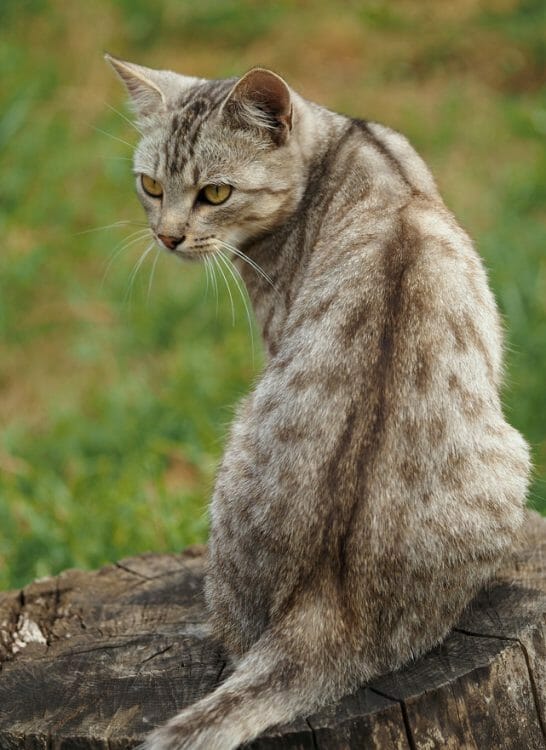
What Does the Spotted Tabby Cat Pattern Look Like?
The spotted tabby cat pattern is believed to be brought about by a modifier gene that breaks up the pattern of the mackerel tabby. Cats with this pattern have stripes that look like spots. In a similar way, the classic tabby pattern can also be broken down by the same spotted modifier gene. Much like the classic and mackerel patterns, the spotted tabby may also have an “M” on the forehead.
The Maine Coon, Bengal, Australian Mist, Egyptian Mau, Arabian Mau, Savannah, Serengeti, and the Ocicat are all breeds that can be found with the spotted tabby coat pattern.




